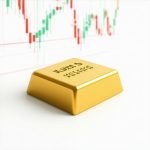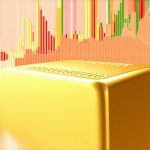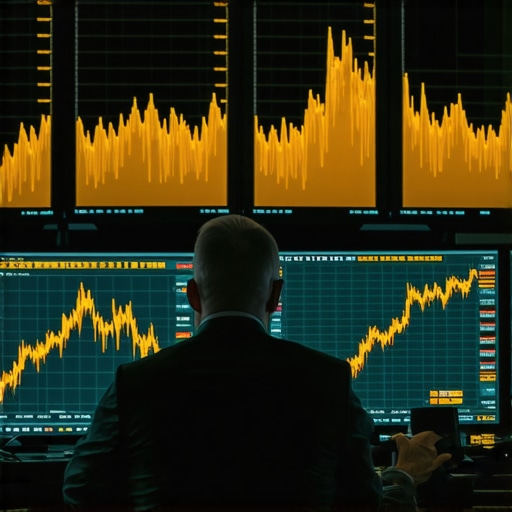Unlocking the Allure of Gold Futures: More Than Just a Metal
Gold has long been revered as a safe haven asset, a store of value that transcends market cycles and geopolitical turmoil. Yet, beyond physical gold ownership lies the dynamic domain of gold futures trading—a sophisticated arena where investors seek to capitalize on price movements without holding the metal physically. Understanding gold futures trading requires more than just knowing contract specifications; it demands an appreciation of the market forces, risk profiles, and strategic opportunities that shape this unique financial instrument.
Behind the Curtain: How Gold Futures Contracts Create Opportunity and Complexity
At its core, a gold futures contract is an agreement to buy or sell a specified quantity of gold at a predetermined price on a future date. This facilitates price discovery and hedging for miners, jewelers, and investors alike. However, futures trading introduces leverage, magnifying both potential gains and losses. For example, a trader controlling one futures contract (typically 100 troy ounces) can gain or lose thousands of dollars with relatively small price changes in gold. This leverage amplifies market exposure but requires disciplined risk management to avoid catastrophic losses.
Strategic Gold Futures Trading: Riding Volatility with Informed Tactics
Experienced traders exploit gold’s price volatility through various strategies such as spread trading, arbitrage, and directional bets. For instance, during periods of geopolitical uncertainty or inflationary pressures, gold prices often surge, creating short-term profit opportunities. However, the challenge lies in timing entry and exit points effectively, as futures prices can be influenced by factors including interest rates, currency fluctuations, and global economic indicators.
What Are the Key Risks Every Gold Futures Trader Must Understand?
The inherent risks in gold futures trading include market volatility, leverage risk, liquidity constraints, and the potential for margin calls. A sudden adverse price move can force traders to deposit additional funds or liquidate positions at a loss. Additionally, unexpected global events can cause price gaps, complicating risk mitigation strategies. Seasoned traders often employ stop-loss orders and maintain diversified portfolios to manage these risks prudently.
Expert Tip: Integrating Gold Futures into a Diversified Investment Portfolio
While gold futures can enhance portfolio returns, they are best utilized alongside other investment vehicles such as physical gold, ETFs, and mutual funds. This balanced approach mitigates risk while allowing investors to benefit from gold’s unique hedging properties against inflation and market uncertainty. For those new to this space, exploring comprehensive guides like the Gold Futures Trading Guide can offer invaluable insights into maximizing profit potential while navigating the market’s intricacies.
For readers intrigued by the sophisticated dance of gold futures, sharing your experiences or questions in the comments can enrich the community’s collective knowledge and empower more informed trading decisions.
Authoritative Reference: According to the CME Group, the world’s largest futures exchange, gold futures contracts are a pivotal tool for price discovery and risk management in global markets.
Personal Lessons on Navigating Gold Futures Volatility
Reflecting on my own journey with gold futures trading, I recall the early days when price swings felt like a rollercoaster I couldn’t quite control. One pivotal experience involved a sudden geopolitical event that caused gold prices to jump overnight. I was caught off guard, and despite having stop-loss orders, the rapid movement tested my risk management skills. This taught me the value of staying informed about global events and being prepared to adjust strategies swiftly. Over time, I learned to blend technical analysis with fundamental insights, which made my trades more deliberate and less reactive.
For anyone stepping into this arena, understanding these nuances is crucial. The effective gold trading techniques for volatile markets I’ve embraced emphasize patience, discipline, and constant education—ingredients that transform uncertainty into opportunity.
How Do You Balance Leverage and Risk in Gold Futures?
Balancing leverage and risk is a personal and strategic challenge. For me, it’s about respecting the power of leverage without letting it dictate my emotions. I usually start with smaller contract sizes and gradually scale up as my confidence and market understanding grow. Setting clear risk thresholds, such as defining the maximum loss I’m willing to tolerate before exiting a position, helps me maintain control.
Moreover, diversifying my investment portfolio beyond gold futures—by including gold ETFs and mutual funds—adds a layer of stability. This multifaceted approach aligns with expert recommendations and ensures I’m not overly exposed to one form of risk.
Insights from Market Data: The Importance of Staying Updated
One resource that has consistently supported my trading decisions is the CME Group’s gold futures market data. Their transparent reporting and detailed contract specifications help me anticipate market trends and understand liquidity conditions. According to CME Group, daily trading volumes and open interest are critical indicators that signal trader sentiment and potential price directions.
Integrating such data into my analysis routine has enhanced my ability to time trades better and avoid getting caught in unfavorable price movements. It’s a reminder that successful gold futures trading is as much about information mastery as it is about intuition.
What Has Been Your Experience with Gold Futures? Share Your Story!
Gold futures trading is a journey filled with learning curves and rewarding moments. I’d love to hear from you—whether you’re a seasoned trader or just starting. What strategies have worked for you? How do you manage the risks and leverage? Sharing your experiences in the comments can create a supportive community where we all grow and succeed together.
Advanced Risk Mitigation Techniques in Gold Futures Trading: Beyond Stop-Losses
While stop-loss orders and position sizing form the foundation of risk management in gold futures trading, seasoned traders employ a suite of advanced techniques to navigate the market’s inherent volatility. One such method is utilizing options on gold futures to hedge directional exposure. By purchasing put options, traders can cap downside risk while retaining upside potential—a strategy often favored during uncertain macroeconomic periods.
Moreover, dynamic hedging strategies, which involve adjusting hedge ratios in response to changing market conditions, can optimize risk-return profiles. These approaches require continuous monitoring of volatility, correlation with other assets, and the trader’s own portfolio objectives. Incorporating Value at Risk (VaR) models tailored to commodities can also provide quantitative boundaries on potential losses, enabling more disciplined decision-making.
How Can Algorithmic Trading Enhance Precision in Gold Futures Risk Management?
Algorithmic trading systems, leveraging machine learning and quantitative models, have become pivotal in refining entry and exit strategies within gold futures markets. By processing vast amounts of historical and real-time data, these systems identify intricate patterns and volatility regimes that might elude manual analysis. For risk management, algorithms can enforce predefined thresholds, automatically adjusting positions or triggering stop-losses, thereby reducing emotional biases and execution delays.
However, the deployment of algorithmic strategies demands rigorous backtesting and continuous calibration to avoid overfitting and to adapt to evolving market structures. Integration with high-quality data feeds, such as those provided by the CME Group Market Data Services, ensures that decisions are grounded in accurate, timely information.
Decoding Macro Drivers: Inflation, Currency Movements, and Gold Futures Correlations
Gold futures do not operate in isolation; their price dynamics are intricately linked to broader macroeconomic factors. Inflation expectations, measured through instruments like the breakeven inflation rate derived from Treasury Inflation-Protected Securities (TIPS), often correlate positively with gold prices as investors seek inflation hedges.
Currency fluctuations, especially the US dollar index, play a crucial inverse role. Since gold is priced predominantly in dollars, a stronger dollar generally suppresses gold futures prices, while a weaker dollar can amplify them. Understanding these relationships is essential for constructing predictive models and timing trades effectively.
Interest rate policies by central banks, geopolitical tensions, and global liquidity conditions further add layers of complexity. For example, during periods of quantitative easing, increased liquidity can drive gold prices upwards, while tightening monetary policies might exert downward pressure.
Leveraging Intermarket Analysis: Gold Futures and Related Markets
Intermarket analysis offers a sophisticated lens through which traders can anticipate gold futures movements by examining related asset classes. For instance, movements in silver and platinum futures often provide early signals due to their shared industrial and investment demand drivers.
Additionally, bond yields and equity market volatility indices, such as the VIX, can indirectly influence gold futures by shaping risk sentiment and capital flows. A spike in the VIX often coincides with increased gold demand as a safe haven, whereas rising bond yields might present an opportunity cost that weighs on gold prices.
Incorporating these cross-market indicators into a comprehensive trading strategy enhances situational awareness and can improve timing precision.
Authoritative Reference: The Investopedia entry on intermarket analysis provides an in-depth exploration of how relationships between various asset classes inform trading decisions.
For traders looking to deepen their expertise, I encourage exploring algorithmic model frameworks and macroeconomic data integration to refine your gold futures strategies. Engaging with specialized forums or professional seminars can also accelerate the learning curve and foster a network of informed peers ready to tackle the complexities of this market.
Harnessing Algorithmic Trading: Elevating Gold Futures Execution to New Heights
The integration of algorithmic trading within gold futures markets marks a transformative evolution, merging computational power with market acumen to refine execution precision. By deploying sophisticated machine learning algorithms and quantitative models, traders can sift through multifaceted datasets—ranging from real-time price fluctuations to macroeconomic indicators—to uncover latent patterns and volatility regimes that manual analysis might overlook. This technological leverage not only accelerates decision-making but also reduces emotional biases, enabling the implementation of rigorous risk controls such as automated stop-loss triggers and dynamic position adjustments.
However, the efficacy of algorithmic strategies hinges on meticulous backtesting against diverse market conditions and continuous recalibration to prevent model overfitting. Access to premium, high-frequency data streams, like those offered by the CME Group Market Data Services, is indispensable for sustaining algorithmic robustness and adaptability in the face of evolving market microstructures.
Decoding Macro Drivers: The Subtle Dance Between Inflation, Currencies, and Gold Prices
Gold futures pricing intricately mirrors macroeconomic undercurrents, with inflation expectations often serving as a bellwether for gold’s trajectory. Instruments such as the breakeven inflation rate derived from Treasury Inflation-Protected Securities (TIPS) provide nuanced insight into investor inflation sentiment, which frequently correlates with increased gold demand as a hedge. Concurrently, currency dynamics—particularly movements in the US dollar index—exert a potent inverse influence; a strengthening dollar typically dampens gold futures prices, while depreciation tends to buoy them.
Central bank monetary policies and geopolitical tensions further compound this complexity. For example, quantitative easing injects liquidity into markets, frequently catalyzing upward pressure on gold prices, whereas tightening cycles can constrain gains. A comprehensive understanding of these interdependencies is paramount for constructing predictive models and timing tactical entries within gold futures trading.
Intermarket Analysis: Unveiling Cross-Asset Signals to Anticipate Gold Futures Trends
Advanced traders often deploy intermarket analysis as a strategic tool to anticipate gold futures movements by examining correlated asset classes. Metals such as silver and platinum share intertwined demand drivers, and their futures price fluctuations can serve as early indicators. Moreover, volatility indices like the VIX and bond yield trajectories shape market risk sentiment, indirectly influencing gold’s safe-haven appeal.
For instance, spikes in the VIX typically coincide with heightened gold buying due to increased risk aversion, while rising bond yields can elevate opportunity costs, pressuring gold prices downward. Incorporating these cross-market signals into a holistic trading framework enhances situational awareness and augments timing precision.
Authoritative Reference: The Investopedia entry on intermarket analysis offers an exhaustive exploration of how asset class interrelationships inform trading strategies.
How Can Advanced Quantitative Models and Real-Time Data Integration Refine Gold Futures Trading Strategies?
Integrating advanced quantitative models with real-time macroeconomic datasets allows traders to construct adaptive frameworks that dynamically adjust to shifting market regimes. Techniques such as regime-switching models, neural networks, and Bayesian inference can capture nonlinear dependencies and transient correlations inherent in gold futures pricing. Coupling these with live feeds on inflation metrics, currency indices, and geopolitical event calendars equips traders with a multidimensional perspective, facilitating more sophisticated entry and exit strategies. Such integration demands robust computational infrastructure and domain expertise but offers a compelling edge in navigating the volatile gold futures landscape.
For those seeking to elevate their trading acumen, engaging with specialized seminars and leveraging institutional-grade data platforms can accelerate mastery of these complex methodologies.
Ready to delve deeper into these advanced gold futures techniques? Explore algorithmic models and macroeconomic data integration to refine your trading edge—join our expert community today and harness the full potential of gold futures markets.
Frequently Asked Questions (FAQ)
What exactly are gold futures and how do they differ from buying physical gold?
Gold futures are standardized contracts to buy or sell a specific quantity of gold at a predetermined price on a future date. Unlike physical gold, futures allow traders to speculate on price movements without owning the metal. This provides leverage and liquidity but introduces risks such as margin calls and price volatility that do not apply to physical holdings.
How does leverage in gold futures trading affect potential gains and losses?
Leverage amplifies exposure by allowing control of large gold quantities with a relatively small capital outlay. While this can multiply profits when prices move favorably, it equally increases the risk of significant losses if prices move against the trader. Proper risk management and position sizing are critical to avoid catastrophic drawdowns.
What macroeconomic factors most influence gold futures prices?
Key macro drivers include inflation expectations, US dollar strength, central bank monetary policies, and geopolitical tensions. Inflation often boosts gold’s appeal as a hedge, while a stronger dollar typically suppresses gold prices. Monetary easing can increase liquidity and elevate gold prices, whereas tightening policies may exert downward pressure.
How can intermarket analysis improve gold futures trading decisions?
Intermarket analysis examines related markets such as silver, platinum, bond yields, and volatility indices like the VIX to identify correlations and leading indicators. For example, rising VIX levels often signal increased risk aversion, benefiting gold prices. Incorporating these cross-asset signals enhances timing and situational awareness in trading strategies.
What advanced risk management techniques are recommended beyond stop-loss orders?
Experienced traders use options on gold futures to hedge downside risk, dynamic hedging to adjust exposures amid changing market conditions, and quantitative models like Value at Risk (VaR) to quantify potential losses. These strategies complement basic stop-losses by providing layered and adaptive risk controls.
How does algorithmic trading enhance gold futures execution and risk management?
Algorithmic trading leverages machine learning and quantitative models to analyze vast datasets, detect complex patterns, and execute trades with precision and speed. It enforces risk parameters automatically, reduces emotional biases, and adapts to market changes through continuous backtesting and recalibration, improving consistency and efficiency.
Can integrating real-time macroeconomic data improve gold futures trading strategies?
Yes, combining advanced quantitative models with live inflation metrics, currency indices, and geopolitical event calendars enables traders to build adaptive frameworks. These models capture nonlinear dependencies and transient correlations, providing a multidimensional perspective that refines entry and exit timing in volatile markets.
What are the common pitfalls beginners should avoid in gold futures trading?
Beginners often underestimate leverage risk, fail to implement stop-losses, and neglect macroeconomic influences. Emotional trading and inadequate diversification can lead to large losses. Education, disciplined risk management, and gradual scaling of positions are essential to mitigate these pitfalls.
How should gold futures be incorporated into a diversified investment portfolio?
Gold futures should complement physical gold, ETFs, and mutual funds to balance risk and return. Their unique hedging properties against inflation and market uncertainty enhance portfolio resilience. However, due to leverage and volatility, futures exposure should be sized prudently within a broader asset allocation.
Where can traders find reliable gold futures market data and research?
Trusted sources include the CME Group’s market data services for real-time pricing and volumes, specialized financial publications offering macroeconomic analysis, and academic research on commodities trading. Access to quality data supports informed decision-making and strategy refinement.
Trusted External Sources
- CME Group (https://www.cmegroup.com/trading/metals/precious/gold.html): The premier global exchange for gold futures, offering comprehensive contract specifications, real-time market data, and educational resources essential for understanding price discovery and liquidity.
- World Gold Council (https://www.gold.org): Provides authoritative research on gold demand trends, investment insights, and macroeconomic factors influencing gold markets, enhancing strategic perspectives.
- Investopedia – Intermarket Analysis (https://www.investopedia.com/terms/i/intermarketanalysis.asp): A detailed explanation of how relationships between different asset classes inform trading decisions, useful for applying cross-market strategies to gold futures.
- Federal Reserve Economic Data (FRED) (https://fred.stlouisfed.org): Offers extensive economic indicators such as inflation rates, interest rates, and currency indexes, which are critical inputs for macro-driven gold futures analysis.
- Journal of Commodity Markets: An academic publication featuring peer-reviewed research on commodity futures trading, quantitative models, and risk management approaches relevant to advanced gold futures strategies.
Conclusion
Gold futures trading represents a complex yet rewarding frontier beyond physical gold ownership. Mastery requires a nuanced understanding of contract mechanics, leverage implications, and the profound influence of macroeconomic forces such as inflation, currency valuations, and monetary policies. Incorporating intermarket analysis and advanced quantitative techniques further elevates strategic precision, while algorithmic trading introduces a powerful toolset for disciplined execution and risk control.
As this article has explored, balancing risk with opportunity through diversified portfolios, rigorous data integration, and continuous education forms the backbone of sustainable success in gold futures markets. Whether you are a novice or an experienced trader, embracing these insights can transform volatility into a calculated advantage.
Ready to deepen your expertise in gold futures trading? Share your thoughts, engage with our expert community, and explore related content to unlock new dimensions of market opportunity.









